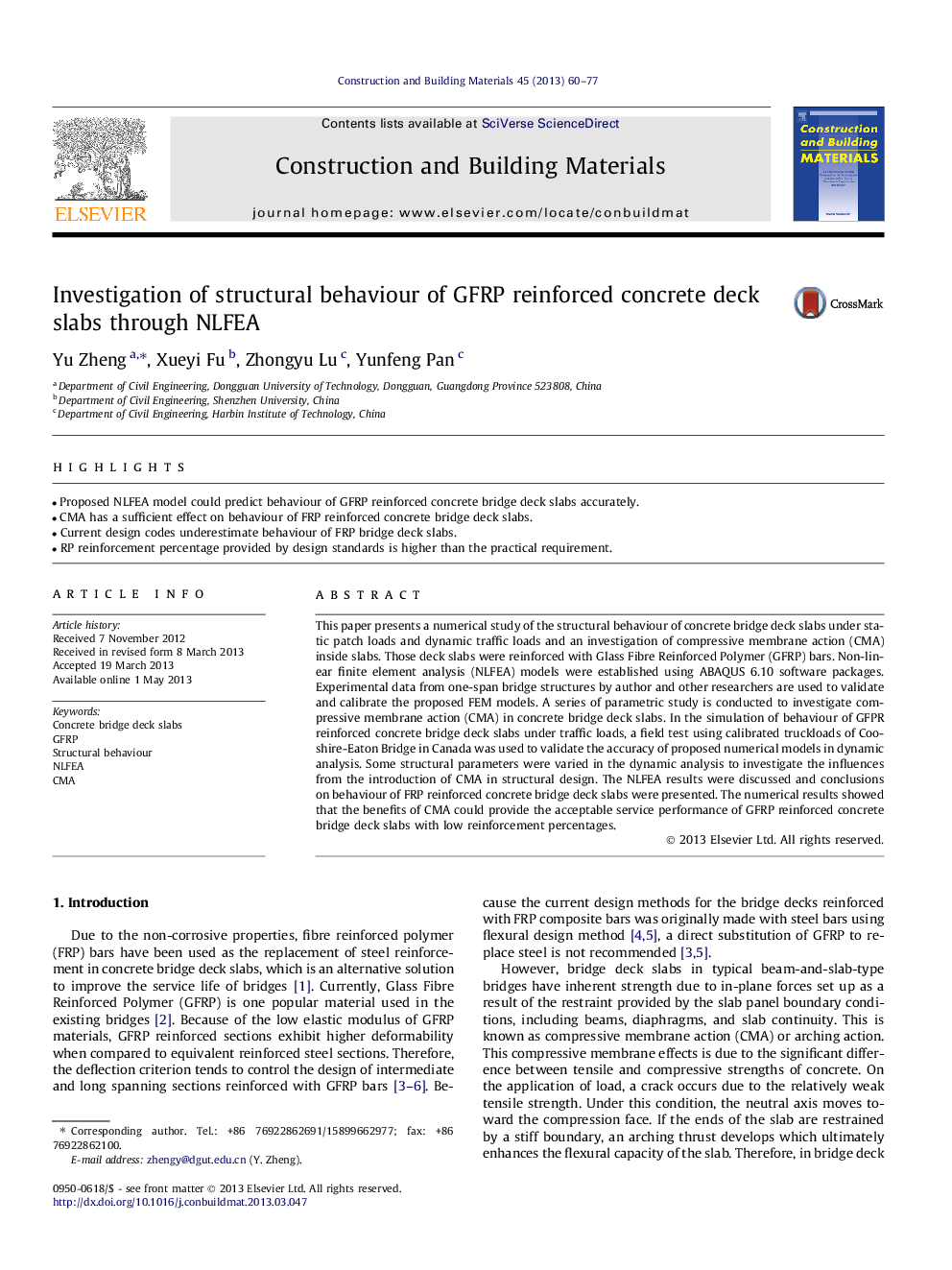| Article ID | Journal | Published Year | Pages | File Type |
|---|---|---|---|---|
| 258203 | Construction and Building Materials | 2013 | 18 Pages |
•Proposed NLFEA model could predict behaviour of GFRP reinforced concrete bridge deck slabs accurately.•CMA has a sufficient effect on behaviour of FRP reinforced concrete bridge deck slabs.•Current design codes underestimate behaviour of FRP bridge deck slabs.•RP reinforcement percentage provided by design standards is higher than the practical requirement.
This paper presents a numerical study of the structural behaviour of concrete bridge deck slabs under static patch loads and dynamic traffic loads and an investigation of compressive membrane action (CMA) inside slabs. Those deck slabs were reinforced with Glass Fibre Reinforced Polymer (GFRP) bars. Non-linear finite element analysis (NLFEA) models were established using ABAQUS 6.10 software packages. Experimental data from one-span bridge structures by author and other researchers are used to validate and calibrate the proposed FEM models. A series of parametric study is conducted to investigate compressive membrane action (CMA) in concrete bridge deck slabs. In the simulation of behaviour of GFPR reinforced concrete bridge deck slabs under traffic loads, a field test using calibrated truckloads of Cooshire-Eaton Bridge in Canada was used to validate the accuracy of proposed numerical models in dynamic analysis. Some structural parameters were varied in the dynamic analysis to investigate the influences from the introduction of CMA in structural design. The NLFEA results were discussed and conclusions on behaviour of FRP reinforced concrete bridge deck slabs were presented. The numerical results showed that the benefits of CMA could provide the acceptable service performance of GFRP reinforced concrete bridge deck slabs with low reinforcement percentages.
